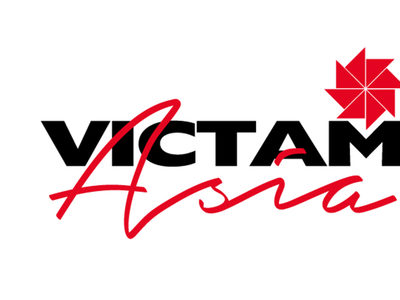Small family farms form the backbone of Korean agriculture, with the average farm size fewer than 2 hectares. Based on its traditionally key position in the Korean diet and culture, rice continues as the most important food grain.
Korea's industrialization over the years has reduced agriculture's importance to the economy. Agriculture's contribution to G.D.P. dropped to 6% in 1996 from 40% in the early 1960s, while agricultural employment declined to 12% from more than 50% in the same period.
Korea still strives for self-sufficiency in rice, horticultural products and all livestock products except beef, and those sectors receive heavy government assistance. But Korea has become a net importer of most other agricultural products, including wheat for food use and coarse grains and other feedstuffs for livestock production.
Korea is likely to import increasing amounts of agricultural products in the future because of market liberalizations tied to the 1997-98 International Monetary Fund assistance package and because of market access pressed on the country through bilateral and multilateral negotiations. For example, under the Uruguay Round trade agreement, Korea's trade restrictions on rice are easing gradually, with imports scheduled to increase to 4% of annual consumption by 2004.
Coarse grain imports also are rising as consumer demand for meat proteins expands, especially now that the 1997-98 economic crisis has passed and income growth has resumed. Although imports of milling wheat are expected to be relatively constant, imports of feed wheat will continue to fluctuate depending on its price competitiveness with maize.
As in other countries, biotechnology and genetically modified grains are becoming increasingly important as consumer and political issues. Earlier this year, Japanese, Australian and E.U. importers of Korean-processed maize items reportedly requested that Korean exporters provide GMO information on their products. And when the Korea Maize Processing Industry Association purchased Chinese maize originating from Inner Mongolia, the group said one reason for the purchase was a non-GMO guarantee.
Consequently, Korea's Ministry of Agriculture and Forestry (MAF) announced that it planned in March 2001 to implement regulations requiring the labeling of unprocessed GM maize. In July 2001, the Korean Food and Drug Administration also will implement some form of labeling requirement on GM maize-based processed foods.
Korea's Agriculture and Fishery Marketing Corp., the state trading company responsible for importing food grade soybeans under quota, also has developed non-GMO specifications for its soybean tenders. The first tender resulted in a lack of bidders because of its stringent specifications, which included the need for non-GMO certificates from both seed breeders and individual farmers. The specifications subsequently were revised to reflect actual market and distribution practices, including acceptance of a single supplier's certificate. Demand for maize is very price elastic with that of feed wheat and alternative grains.
WHEAT AND FLOUR MILLING. Korea has a mature, established flour milling industry, with about a dozen milling facilities. Most are located in the major population area of Seoul and near the grain-importing ports of Pusan and Inchon.
According to the Korea Flour Mills Industrial Association (KFMIA), wheat flour utilization from 1995 through 1999 averaged 1.67 million tonnes annually, or 34.8 kg on a per capita basis. Total consumption dipped by about 4% in 1998 at the height of the economic crisis, but recovered to a record 1.77 million tonnes, or 36.1 kg per capita, in 1999.
Korea grows no wheat, and all milling quality stocks are imported. The KFMIA reported total milling wheat imports in calendar year 1998 at 2.146 million tonnes, with 1999 imports increasing to 2.385 million.
The United States, Australia and Canada are the key supply sources, with the U.S. share in 1999 at 56.7%, Australia at 38.1%, and Canada at 5.2%. The wheat type with the single largest share in the Korean market in 1999 was Australian standard white wheat at 29.2%, followed by U.S. white wheat at 24.3% and U.S. hard red winter at 17.6%.
Although economic conditions have improved, the Korean exchange rate remains depreciated compared with pre-crisis levels, making imported wheat relatively more expensive. Thus, millers still rely on credit programs, such as U.S. GSM-102 guarantees, to procure needed supplies.
The mainstay wheat-based food product in Korea is noodles. Their importance was underscored in a survey conducted at the end of 1999 by the Samsung Economic Research Institute, which identified ramen, or instant noodles, as one of the "ten major Korean products of the 20th century." Other major products listed were computers, the automobile and the telephone.
Called the "second staple food," ramen was first sold in Korea in 1963, five years after its introduction in Japan. In Korea, ramen became very popular because of its low price and high caloric value.
Because of rice shortages at the time, the government encouraged the use of wheat flour-based foodstuffs instead of rice, and ramen was distributed quickly to the population. By the 1990s, ramen companies began to emphasize the healthy ingredients and special flavors of new ramen products to break away from ramen's image as a low-priced food product. Currently, 120 different types of ramen are sold, and Koreans consume 3.8 billion packets a year.
Because the ramen market already is saturated, demand is not expected to increase substantially. But consumption of wheat-based products is increasing slightly for confectionery and bakery items.
RICE. In the past 10 years, rice area and production in South Korea have been slipping. In 1995, milled production dropped below 4.5 million tonnes for the first time since 1980.
To encourage increased output, the government began to raise rice support prices, including a 5.5% increase for the 2000 marketing year. Planted area has increased as a result of the higher support and several other government initiatives.
MAF is investing resources to develop direct marketing channels for rice from farm to retail. The goal is to lower consumer cost by removing the commercial middleman.
The MAF development program also calls for 360 rice processing centers to be developed by 2004. The centers will provide drying, storing, milling, distribution and purchasing services for farmers. By 2004, the centers are expected to account for 50% of all rice processing across the nation.
Despite these efforts, the Korea Rural Economic Institute (KREI) forecasts that rice production eventually will lose ground to more lucrative cash crops, such as vegetables, as the economy improves. Further, KREI predicts per capita consumption of rice will decrease to 88 kg by 2004, down from 95 kg in 1999, as consumers substitute greater quantities of wheat-based products in their daily diet.
With consumption declining and domestic stocks continuing to rise in reaction to high production incentives, Korean officials are determined to hold to the minimum import requirements of the Uruguay Round. Under those requirements, Korea agreed to Minimum Market Access (MMA) quotas, with the 2000 MMA commitment at 102,614 tonnes, milled basis.
Korea's buying strategy is to meet minimal MMA commitments and to tender for only lower quality rice to avoid creating competition for domestic rice. Korea remains adamant that it will not revisit its MMA commitment until after 2004, and the increasing levels of domestic stocks will pressure the government to adhere to this position.
LIVESTOCK AND FEED. The growth in demand for meat protein is rebounding in the economic recovery's wake. A "mini-expansion" is occurring in the swine, poultry and pet foods sectors, although the cattle sector continues to contract. Consequently, compound feed production in 2000-01 is expected to surge to pre-crisis levels. Total output this season is estimated at 15.5 million tonnes.
A sign of Korea's recovery from the economic crisis is the level of financial liquidity found in the sector. Korean feed millers are now able to source grain independent of financial assistance programs and buy based on price.
Indeed, price traditionally has been a driving factor in the composition of Korean feed. Although maize typically dominates rations, the proportions can vary substantially depending on the comparative price of wheat and, to a lesser extent, rye.
For example, grain and grain substitutes are projected to make up 10.7 million tonnes of all feed ingredients in 2000-01. Maize will account for about 65% of rations, with wheat estimated at about 11%. The percentage mix was similar in 1999-00, but in 1998-99, wheat accounted for 25% of rations, with maize dropping to 56%.
Price also is a major factor in sourcing feed ingredients, particularly maize. Although the United States traditionally enjoyed a large share of the Korean maize market, Chinese maize is readily substituted when available at cheaper prices. Korean buyers forward purchased a significant quantity of Chinese feed grade maize in reaction to the January announcement by Chinese authorities that maize would no longer be quoted below U.S.$100 per tonne, f.o.b.
Although Korea's livestock and feed industry is enjoying a comeback from the economic crisis, the industry suffered somewhat of a setback with the April confirmation of a case of foot and mouth disease, the first in 34 years. To date, only three confirmed cases have been found, all in cattle, but the swine and pork meat sectors also have felt an economic impact.
Melissa Cordonier Alexander, formerly an editor of World Grain, is now a consultant providing information research services for agriculture.





